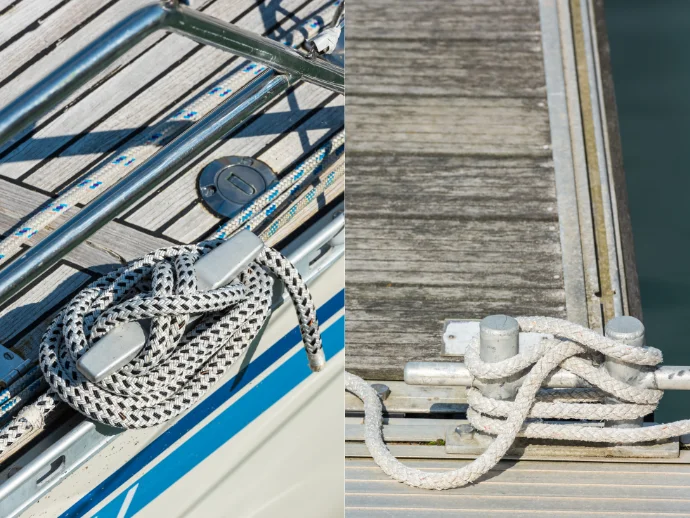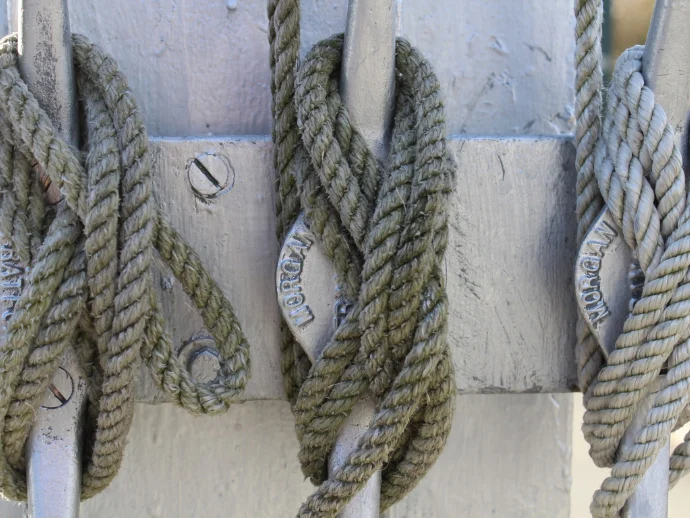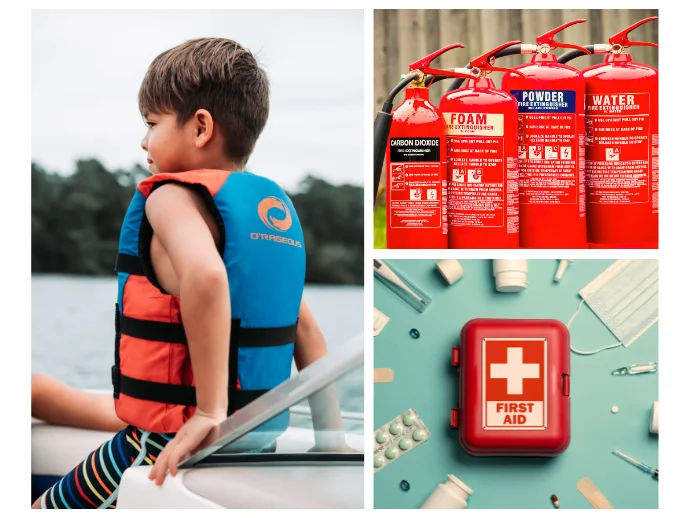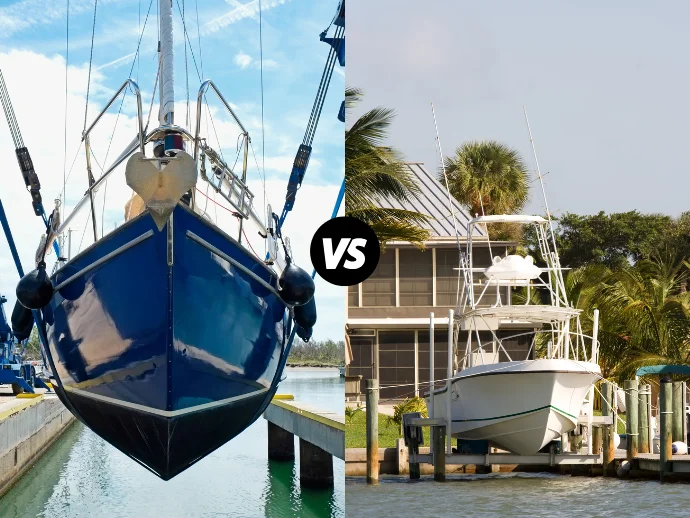
Regardless of whether you’re docking a baby fishing vessel or securing a massive yacht, boat cleats assist you in mooring your boat safely and securely. Although they may look basic, cleats are integral components of mooring systems and provide solid points for lines that allow you to stabilize your boat. Not all cleats are alike, however. When it comes to selecting the proper boat cleat types, it isn’t just about function; it’s also about functionality as well as (a) strength, (b) safety, (c) material, and (d) diversity of boat cleats.
Importance of Boat Cleats
The boat cleat may seem like a small piece of hardware, but it takes a fair amount of weight before letting the boat drift away, as it gets beaten by the elements fairly constantly. The benefit of selecting the right cleat leads to:
- Secure mooring and dock,
- Reduced stress on hardware and dock lines,
- Safe boarding and disembarking,
- Long-lasting performance in harsh marine environments.
Not choosing the right cleat may end up with chafing lines, broken docks, or worse, a lost vessel. Therefore, ensure the design and strength of the cleat match the boat’s size and intended use.
Key Factors to Consider
Consider the following factors before selecting from a large variety of boat cleat types:
1. Boat Size & Weight
The force applied to the docking lines increases with boat size and weight. In general, heavier and larger boats will need larger cleats (8″-12″), and smaller boats may need only 4″-6″ cleats.
2. Mooring Environment
Will you be docking in a quiet lake or a windy tidal marina? Finally, the cleats that would hold dock lines for boats exposed to currents, waves, or wind will need to have greater durability and reliable mounting.
3. Material
There are many materials that boat cleats are made of:
- Stainless Steel: It is great for saltwater because it is strong and resistant to rust.
- Galvanised Steel: good strength also, lower cost than stainless steel, but may corrode over time
- Aluminum: light-weight option, corrosion resistance; not as strong when compared to steel
- Nylon / Plastic: temporary dock features, usually light-weight boats; not recommended for permanent mooring purposes
4. Mounting Style
Cleats can be surface-mounted using screws or bolts, or they can be mounted flush with the deck. The method of mounting involves installation complexity and strength of attachment to the boat.
Common Boat Cleat Types & Their Usage
Here’s a useful look at the most common types of boat cleat designs, what they look like, and where they are best used:
1. Horn Cleats
Design: Shaped like two extended horns, this is the traditional style of cleat found on most boats and docks.
Use Case: Practical docking and mooring, good, reliable daily use. It’s simple to tie off with a common cleat hitch.
Pros:
- Simple traditional design
- Every size boat
- Available in many materials and sizes
Best For: Using every day, tie off lines on docks or boats.
2. Pop-Up Cleats
Design: Retractable cleats that sit flush with the deck when not in use and “pop up” when needed.
Use Case: Ideal for no deck space or stylish and modern boats.
Pros:
- No tripping hazards.
- Clean lines.
- Great for sailboats and high-end boats.
Cons:
- More expensive.
- More complicated to install.
Best For: Boaters who want an aesthetic look and want to protect their deck.
3. Flip-Up Cleats
Design: The same as pop-ups, but they need to be manually folded down instead of retracting automatically.
Use Case: Every time flush mounting was needed, without the price of pop-ups.
Pros:
- Space saving.
- Cost-effective alternative to pop-ups.
Best For: Medium to large boats with varying mooring requirements.
4. Samson Posts
Design: A vertical post that often comes with a crossbar used in heavy-duty marine applications.
Use Case: Seen on commercial vessels and for tying down, anchoring, and towing lines.
Pros:
- Handles large loads.
- Strong and secure.
Cons:
- Large and bulky.
- Not suitable for small recreational vessels.
Best For: Heavy-duty docking, anchoring, or towing.
5. Ski Tow Cleats
Design: Hybrid cleat with a tow eye – used for docking and towing water sports equipment.
Use Case: Ideal for boats that go back and forth from the dock to wakeboarding or tubing.
Pros:
- Versatility in use
- Easy to attach the rope
Best For: Family vessels and water sports enthusiasts
6. Dock Cleats
Design: Usually horn-style, larger, and specifically made for permanent attachment to a dock.
Use Case: For tying many types of vessels when a boat is at a dock.
Pros:
- Heavy-duty
- Constant usage
Best For: Marinas, private docks, boat houses
Tips on Proper Dock Cleat Installation
Choosing the proper docking cleat is only part of the story – the way cleats can perform and, more importantly, the safety offered can also be affected by how the cleats are installed.
- Reinforce Area of Mount: Supplemental use of backing plates or washers, etc., to dissipate the force of a boat or yacht tied to a cleat without damaging the deck.
- Use Marine-Grade Fasteners: Best to use stainless steel bolts; avoid using any screws from any big box store that will eventually defeat the purpose and rust.
- Seal the Penetrations: Apply a marine sealant around penetrations to mitigate the acceptance of water.
- Place Properly: Cleats should be mounted at the bow, stern, and midship, evenly weighted when mooring.
If you prefer to do it yourself, you can find many guides available online that will walk you through the mounting process; however, for larger boats and flush-mounted cleats, you should think about getting your cleats mounted by a pro.
Matching Boat Cleats to Your Needs
When selecting the appropriate cleat for your boat, consider the type of boat, your use of the boat, and the environment you will be boating in. Here’s a brief overview of cleat types related to typical boating situations:
1. Small Fishing Boats
Recommended Cleat: Horn or flip-up cleats
Material: nylon or aluminum
It’s safe to say that most occasional fisherman or weekend boaters don’t need oversized hardware on their small boat. Horn or flip-up cleats offer simplicity, ease of handling, and sufficient strength for light-duty docking. Keeping the weight down with either nylon or aluminum is an excellent option, and of course, they stay corrosion-free in freshwater applications. These types of cleats are inexpensive and simple to install.
2. Pontoon Boats
Recommended Cleat: flip-up or pop-up cleats
Material: aluminum or stainless steel
Pontoon boats have clean, open decks that offer less clutter, so flip-up or pop-up cleats make great sense. Flip-up and pop-up cleats tuck away nicely when not in use, creating less risk of tripping. Aluminum will work great in freshwater applications, while stainless steel will be a solid choice for saltwater applications. If your pontoon will focus on recreational docking and is used at relatively calm marinas, either material will be fine.
3. Sailboats
Recommended Cleat: pop-up cleats or Samson posts
Material: good quality stainless steel
Sailboats are under constant tension from wind and shifting waves, so reliability is critical. Pop-up cleats give a snug fit with no obstructions on the deck; Samson posts provide incredible holding power. Stainless steel materials prevent rust and wear and tear over time. These options can work effectively with both docking and rigging load requirements.
4. Power Boats
Recommended Cleat: Ski tow cleats or pop-up cleats
Material: Stainless steel.
Power boats often have a dual purpose while either docked or being used to tow water sports. Ski tow cleats provide only a place to attach a tow rope in a very accessible tie-off point, while pop-up cleats allow the boat to remain in a streamlined look when not in use. Stainless steel ensures a strong attachment point when at speed and in wet environments. These cleats can combine both operational use and performance.
5. Yacht
Recommended Cleat: Pop-up or flush-mount cleats
Material: Premium-grade stainless steel.
Luxury Yachts demand both performance and style from a functional perspective. Most yacht owners prefer the aesthetic and convenience of pop-up or flush-mounted cleats while moored, as they provide an elegant and sculpted look. Premium stainless steel materials blend seamlessly with high-end finishes and are designed to endure the brutal conditions of a marine environment. These cleats were designed for style, strength, and durability.
6. Dock Installations
Recommended Cleat: Large horn cleat
Material: Galvanised steel.
Docks are subject to continuous use and require cleats that can handle all types of boats. Large horn cleats are very strong tie-downs and will facilitate tying down most docking lines. Galvanized steel withstands abuse from all types of use and exposure. They’re perfect for private docks, marinas, and boat houses.
Conclusion
Whether you’re a weekend boater or a full-time sailor, selecting the right cleat can mean the difference between endless frustrations. Each cleat type has its advantages; call it the flip-up style or the robust Samson posts. Most importantly, it is how well it supports your vessel in your boating activity.
By learning about the various boat cleat types, scoping your environment, and following proper installation procedures, you are setting your boat up safely and securely for a reliable docking process, wherever the journey takes you.



